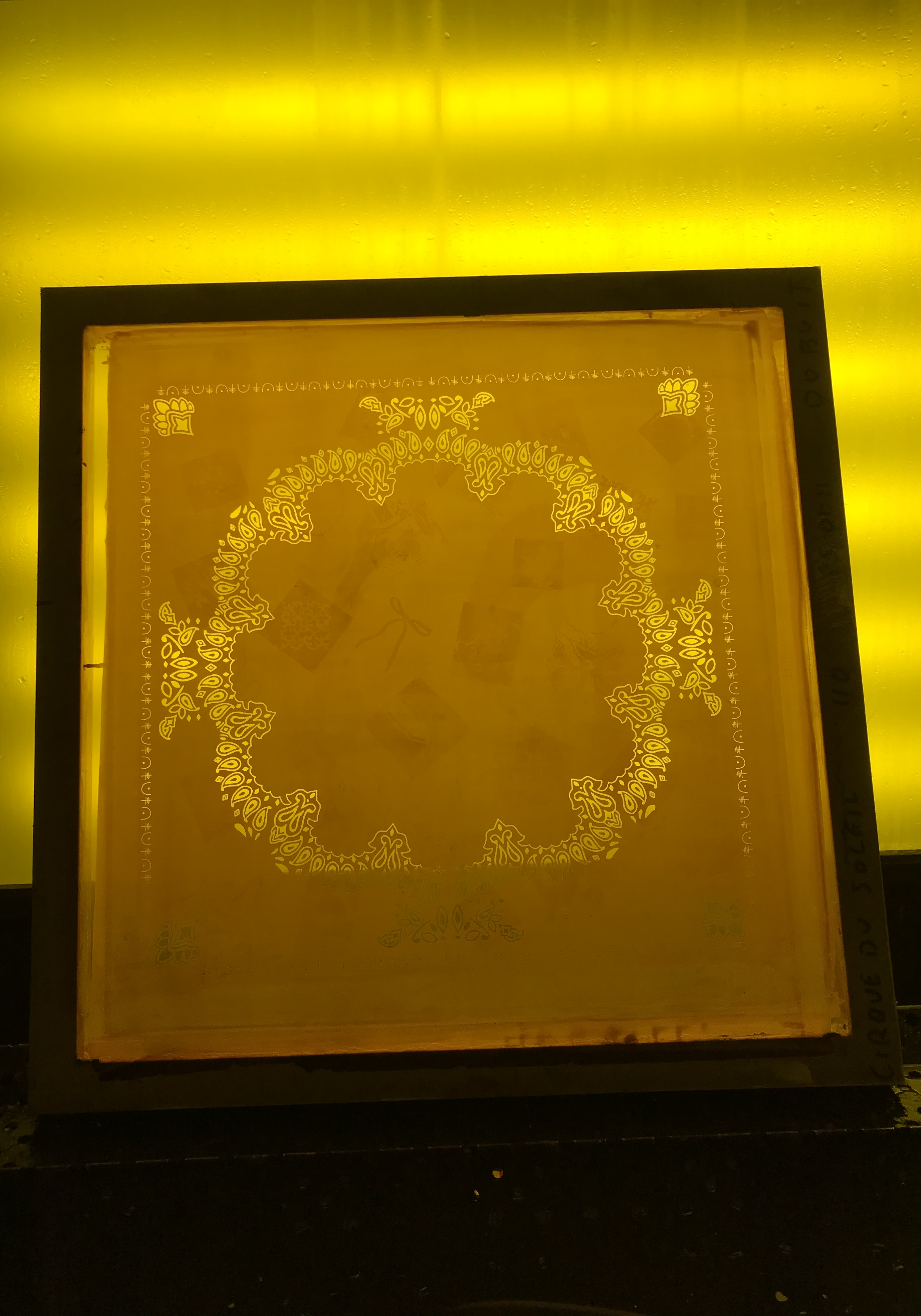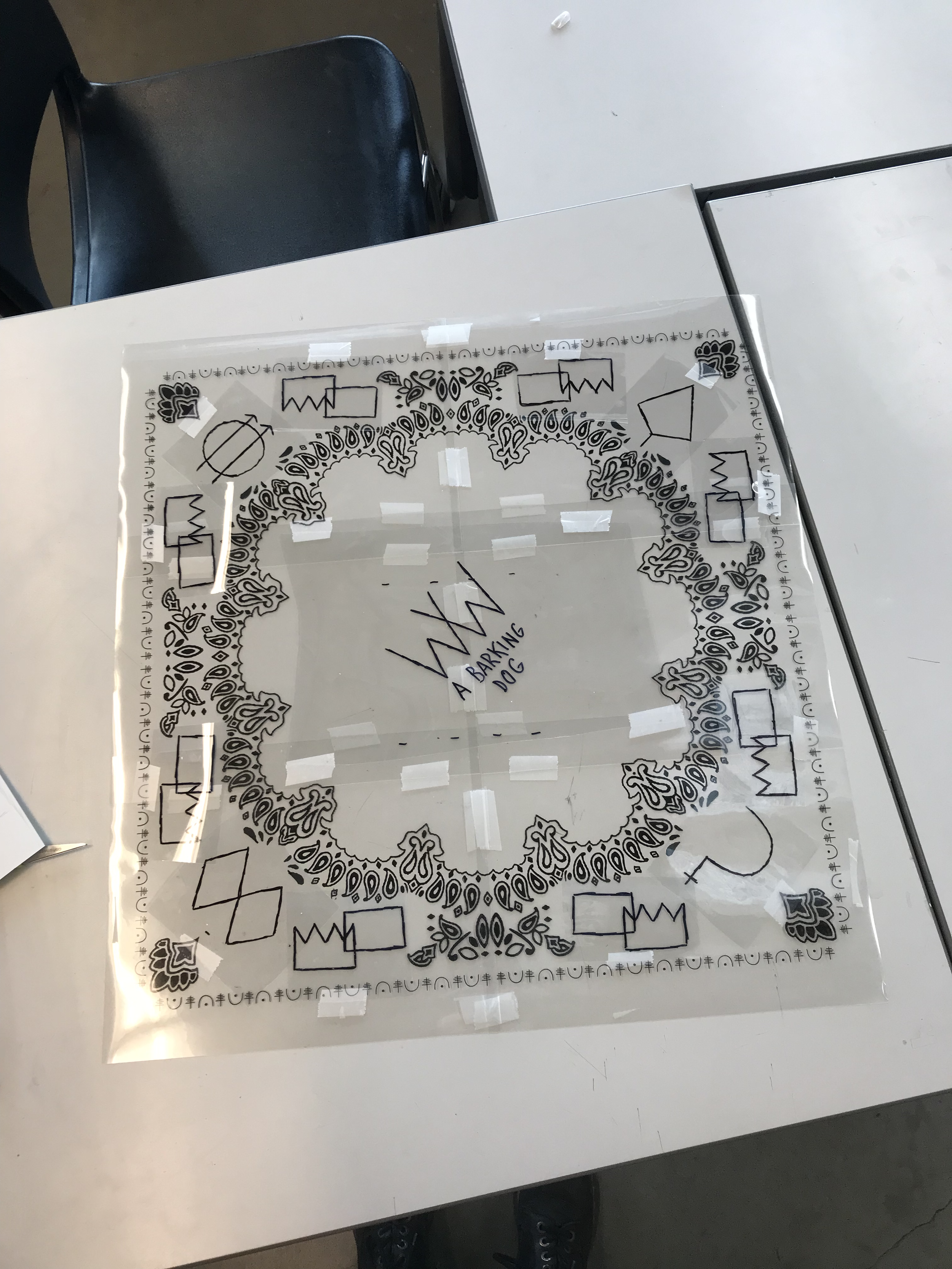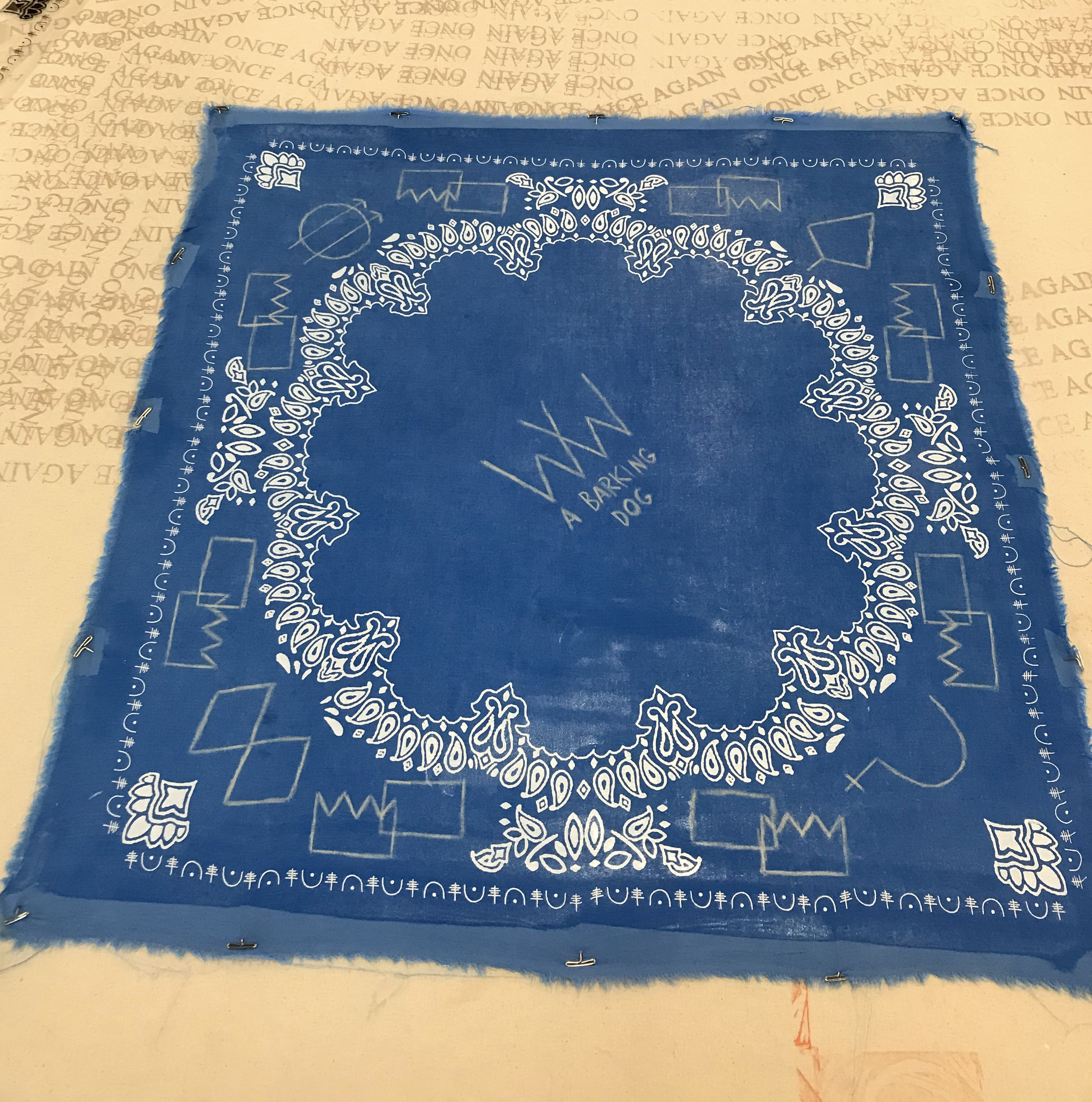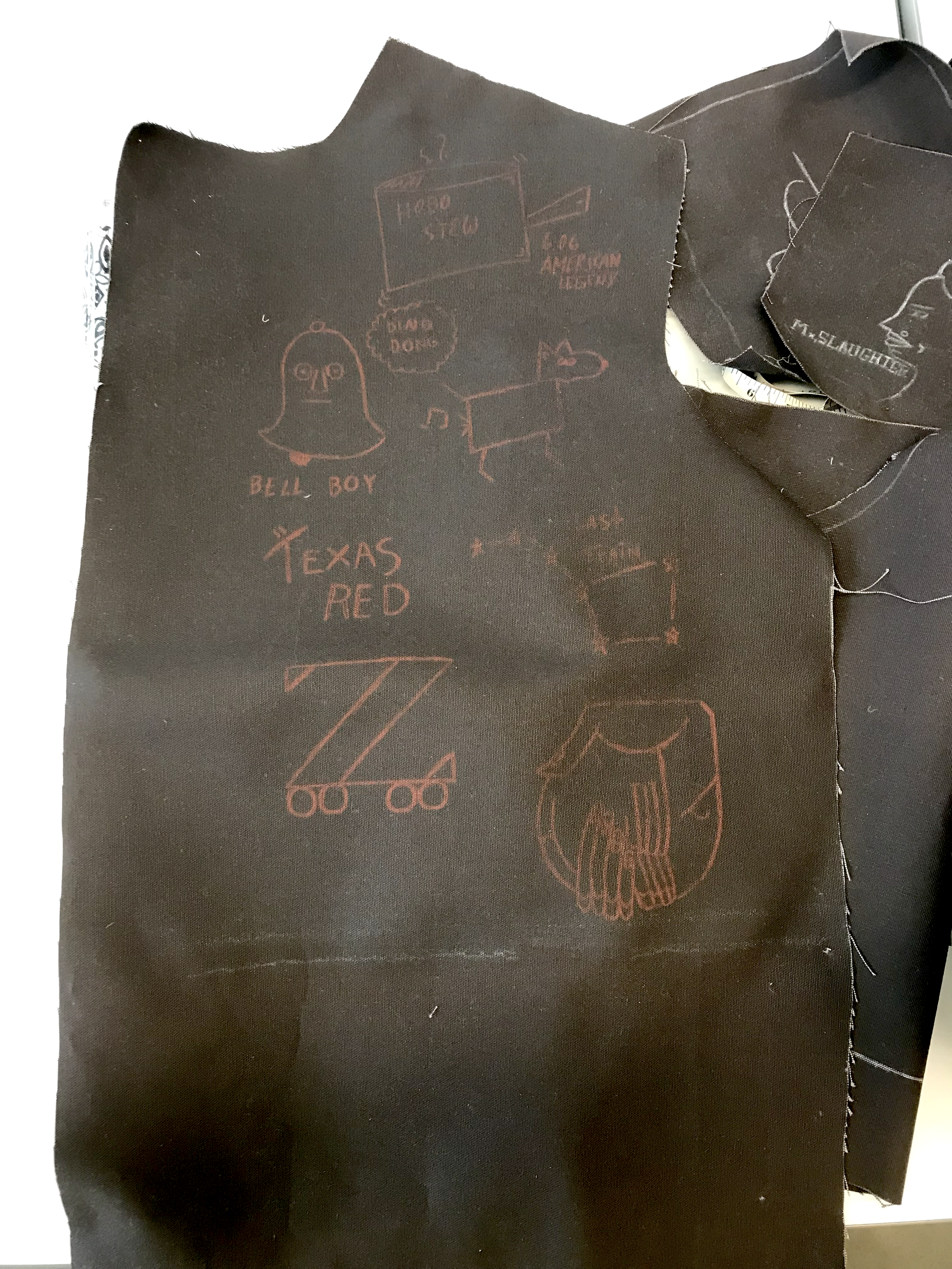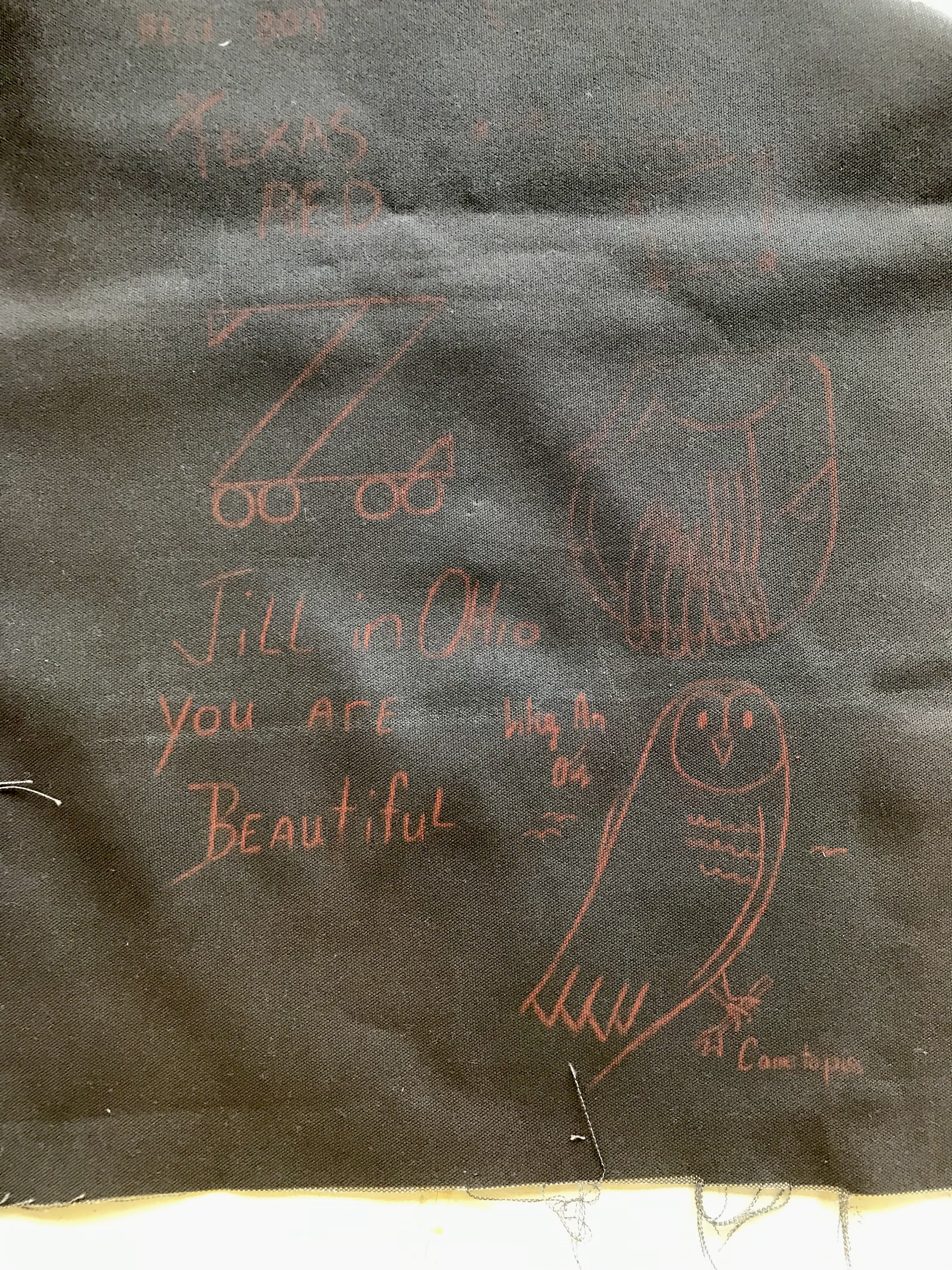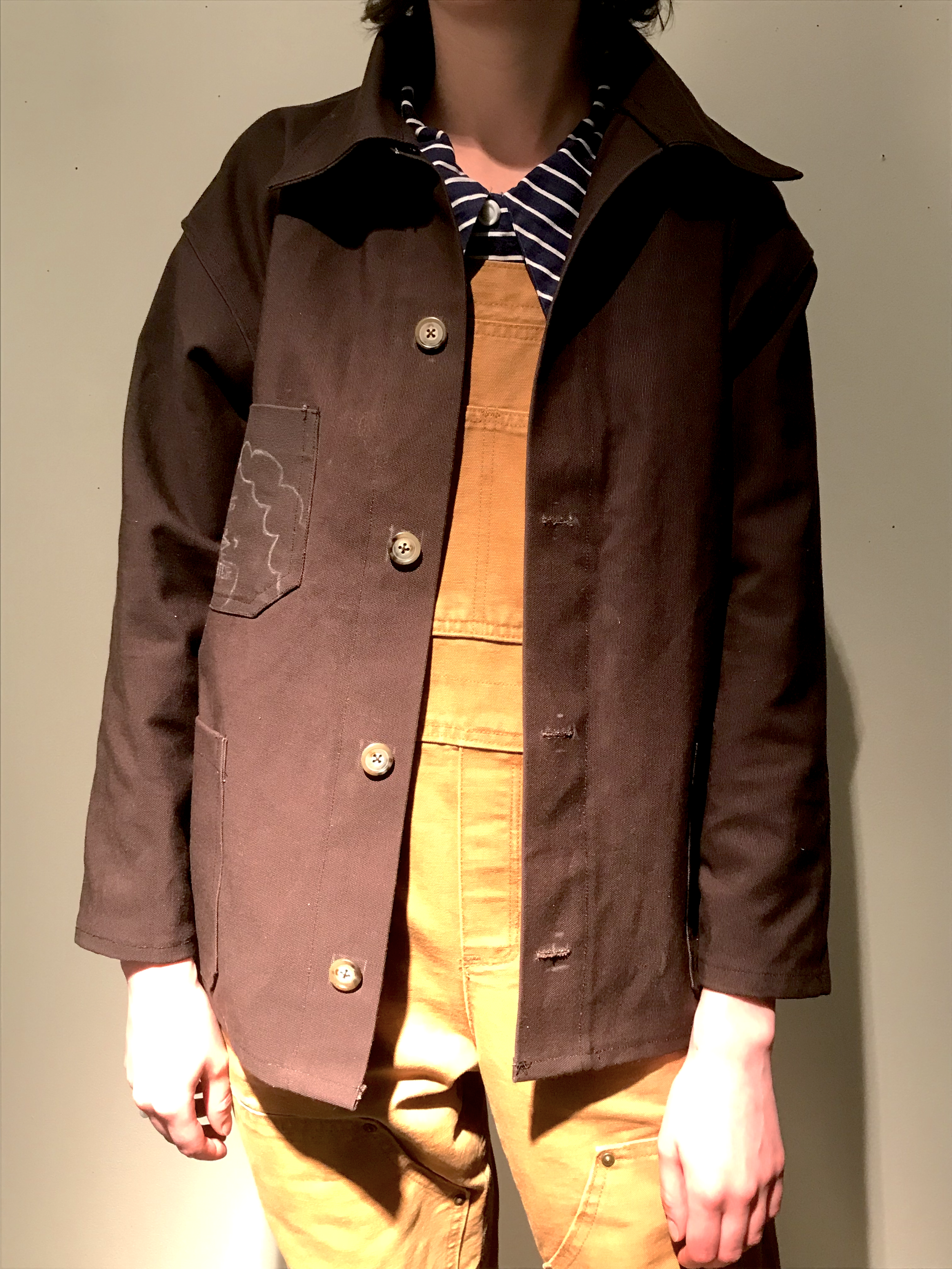A Barking Dog
I’ve been interested in the 19th and 20th century concept of the hobo for years. This piece refers to the romanticized idea of the historical hobo that represents a space of freedom from mainstream culture and a way to push back against enforced capitalism.
It takes the form of a canvas jacket lined with mono-printed hobo monikers—I like to imagine that someone took an entire boxcar and made a jacket out of it. Whoever it is that wears this jacket also carries a bandana, which they use to communicate in code.
The point is what is concealed; viewers are invited to discover the markings and infer their meaning, though only those who are familiar with hobo culture will fully understand, and even then, the full scope of the piece is always out of view. I’m interested in the continental archive of thoughts, information, and warnings that are only really intended to be shared within a specific group of people. The piece represents that archive while remaining hidden.
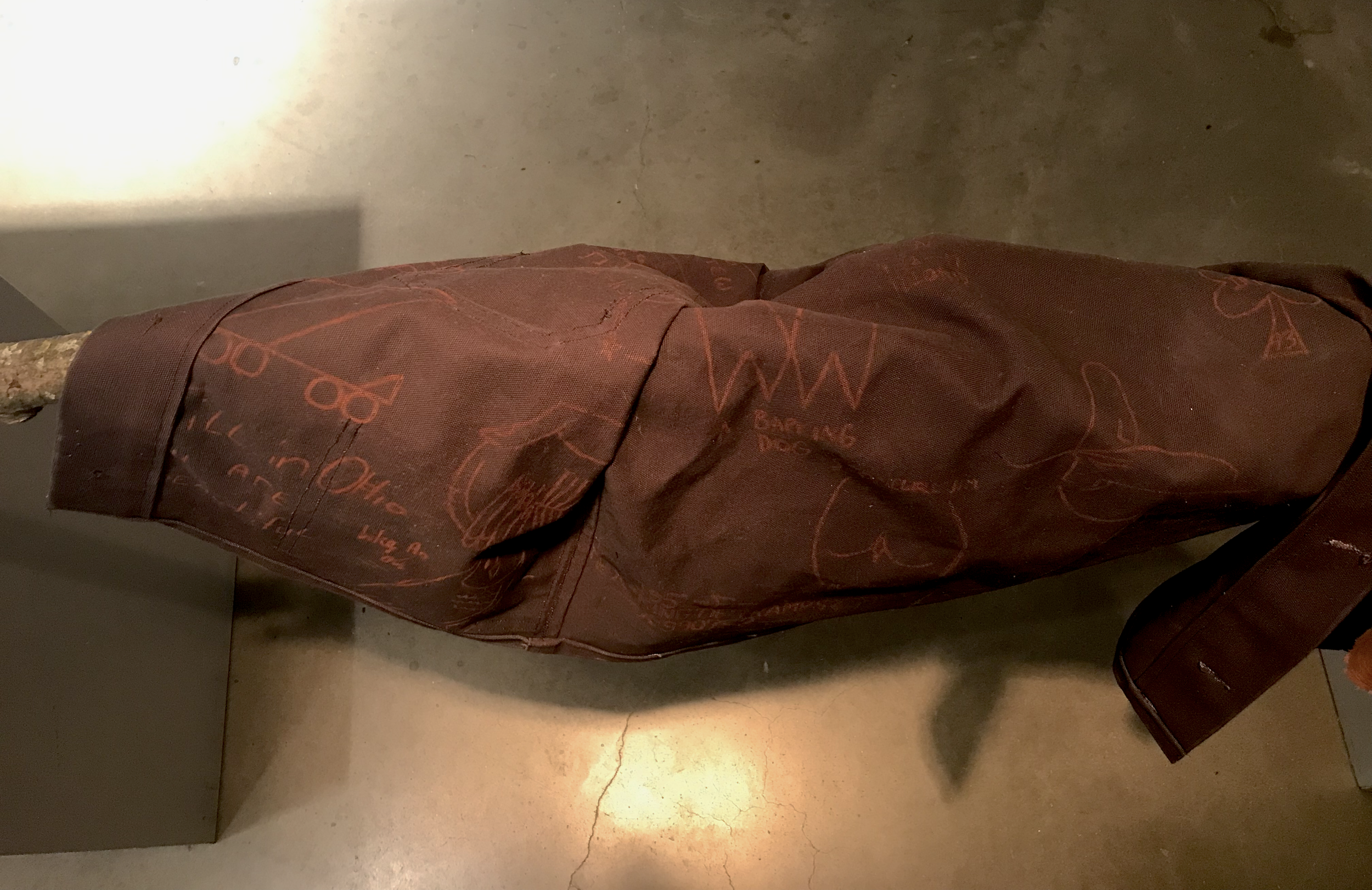
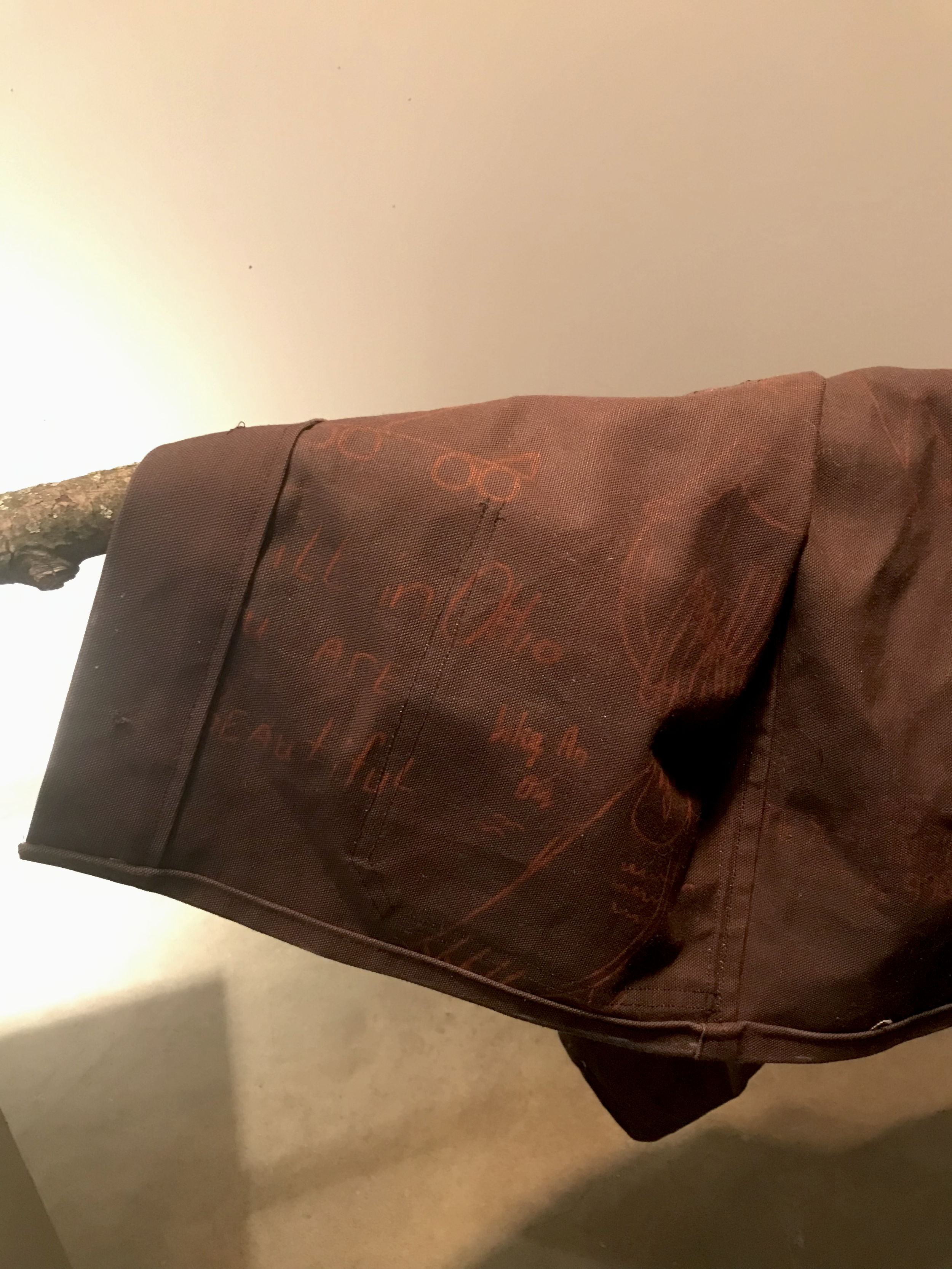
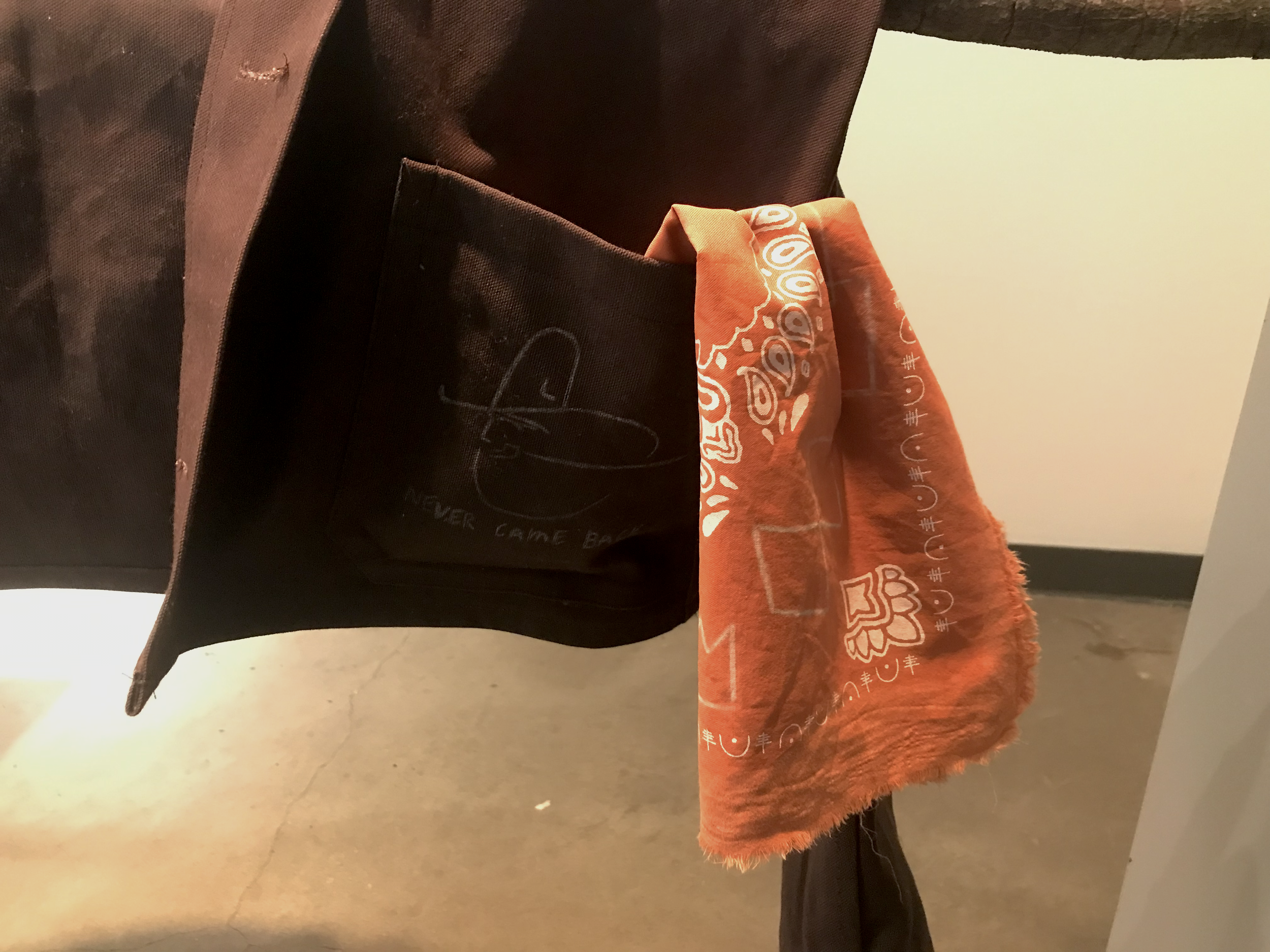
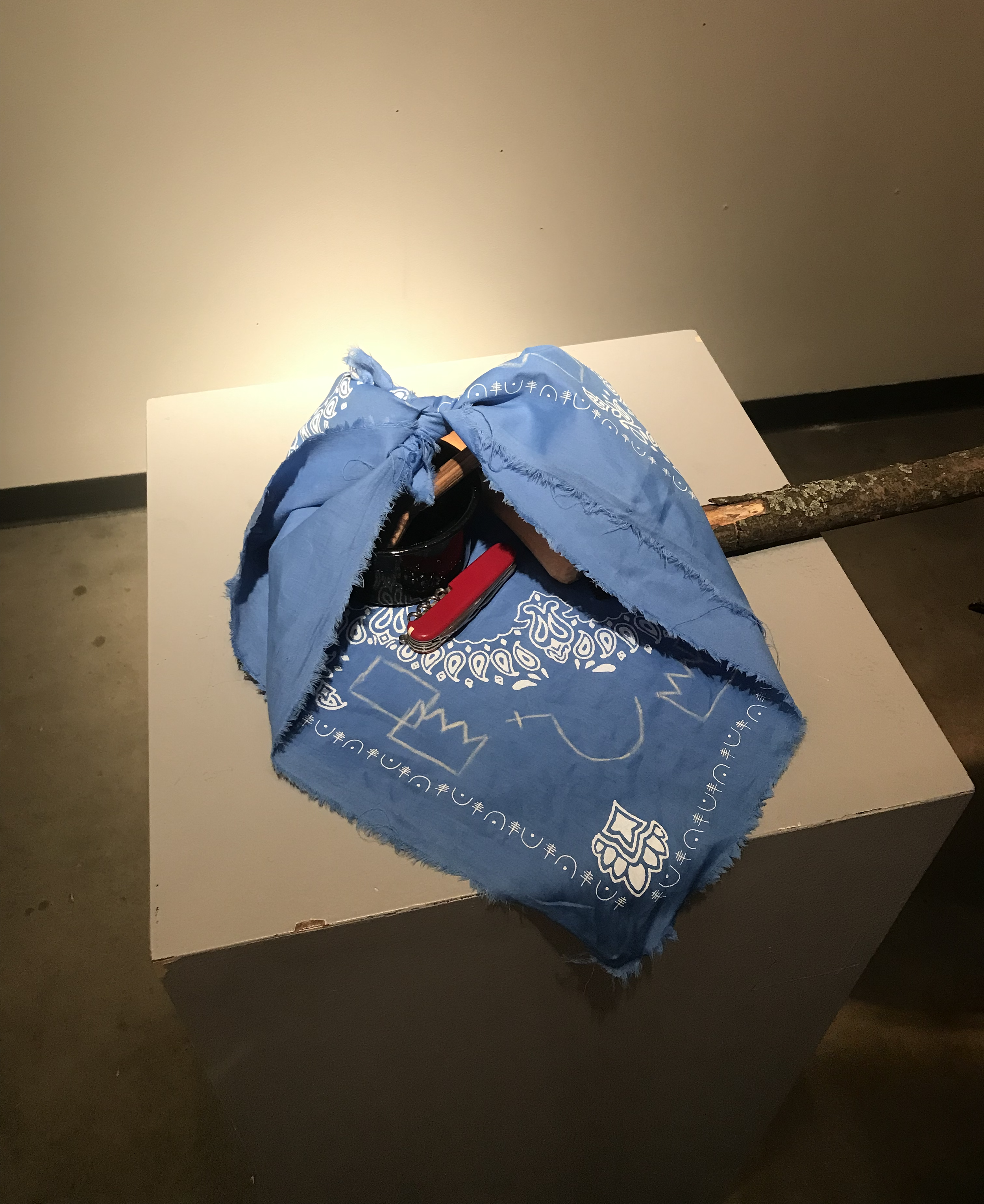

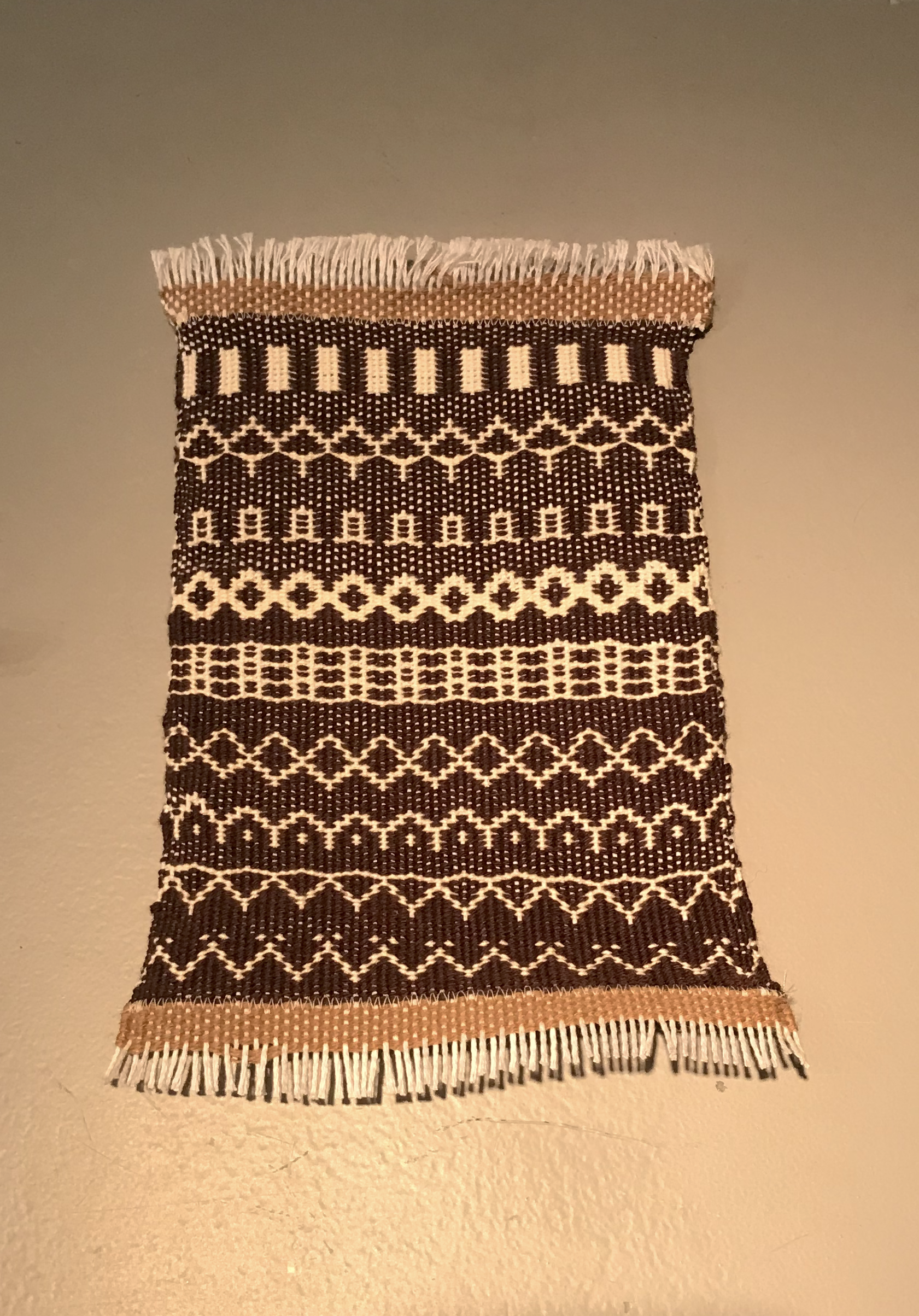
I became interested in hobos mainly through my discovery of hobo code, which was supposedly a system of symbols that hobos used to impart information about places they visited. There isn’t really evidence that the system was widely used by hobos of the past, though some contemporary hobos have taken to using it and one of the most famous hobos, known as A-No. 1, is rumoured to have perfected the system if not come up with all of it himself.
I incorporated hobo code into a traditional bandana design, screen printing the main design (with hobo code border) and using watercolour pencil mono-prints to fill in hobo code symbols. This gives the effect of chalk, as if the symbols are written in chalk and can be erased and rewritten as needed.
From Ernst Lehner’s Symbols, Signs and Signets
I also included railroad graffiti in the piece. Boxcar graffiti is the main way that historical hobos communicated with each other, often leaving a distinctive personal moniker and the date and direction of their travels. The hobo scholar John Lennon writes that it’s a “symbolic communication system that uses the actual train itself to send and receive messages.” I used the watercolour pencil mono-print technique again here, first drawing my favourite monikers, then using the r/monikers subreddit for more inspiration. The result is a wide-ranging archive of monikers from at least the late 1950s to the present.
Train art by BuZ Blurr, also
known as the Colossus of Roads
It’s important to me that the piece is grounded in something as concrete and practical as a jacket and a bandana because the piece functionally became imaginary as its mythology grew. I imagined a hobo persona for myself called (of course) A Barking Dog, and the bandana’s centre displays this name and the persona’s moniker, which is hobo code for “barking dog.” This name and moniker can also be found next to the real boxcar art inside the jacket. The piece is rooted in both the true material culture of the graffiti and the largely imagined tradition of hobo code, both of which have been accepted into the mainstream conception of the hobo. Alongside these larger traditions is my own imagined history, which takes inspiration from each of these elements.

